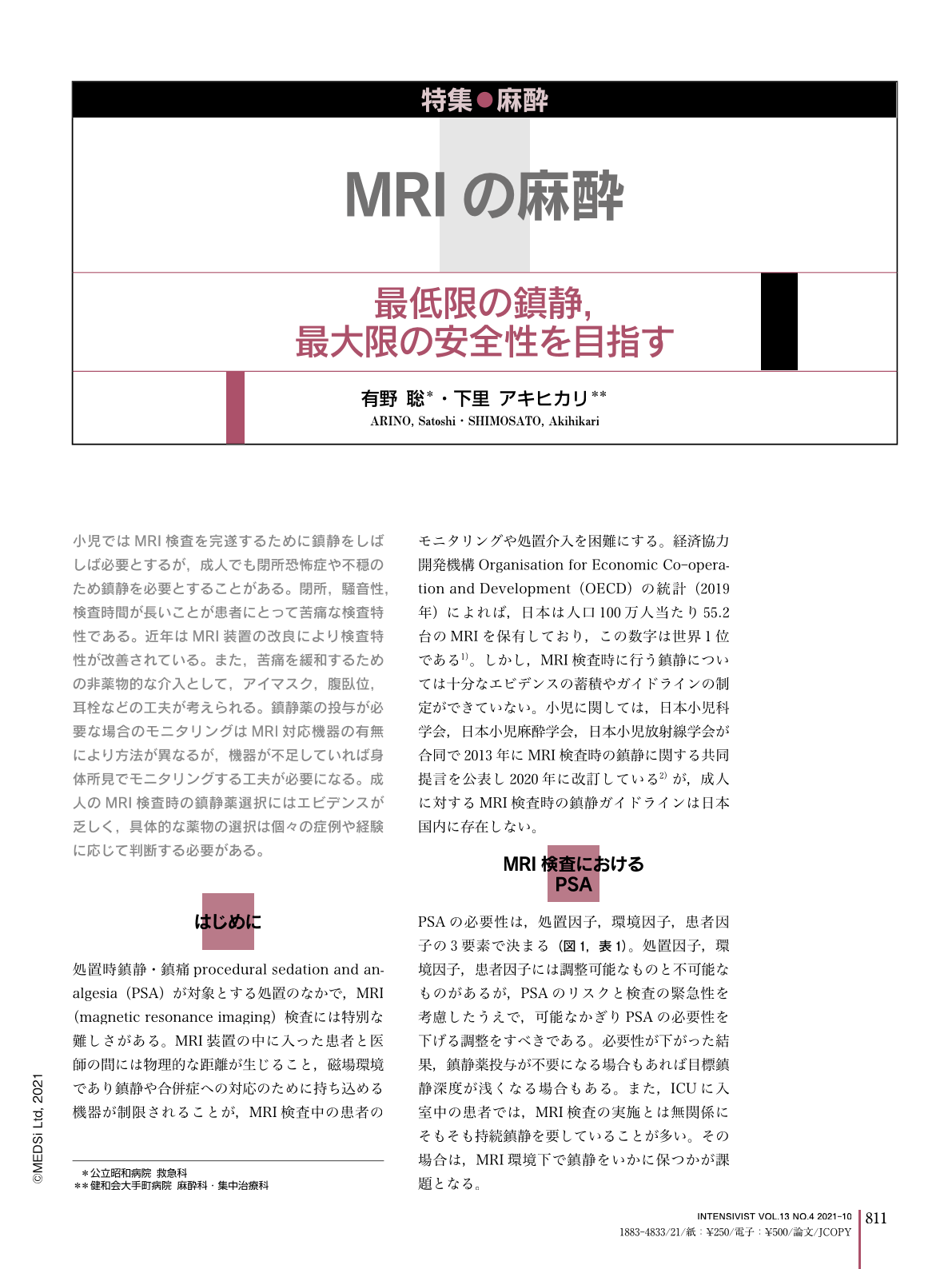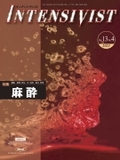Japanese
English
- 有料閲覧
- Abstract 文献概要
- 1ページ目 Look Inside
- 参考文献 Reference
小児ではMRI検査を完遂するために鎮静をしばしば必要とするが,成人でも閉所恐怖症や不穏のため鎮静を必要とすることがある。閉所,騒音性,検査時間が長いことが患者にとって苦痛な検査特性である。近年はMRI装置の改良により検査特性が改善されている。また,苦痛を緩和するための非薬物的な介入として,アイマスク,腹臥位,耳栓などの工夫が考えられる。鎮静薬の投与が必要な場合のモニタリングはMRI対応機器の有無により方法が異なるが,機器が不足していれば身体所見でモニタリングする工夫が必要になる。成人のMRI検査時の鎮静薬選択にはエビデンスが乏しく,具体的な薬物の選択は個々の症例や経験に応じて判断する必要がある。
Procedural sedation is often required for magnetic resonance imaging (MRI) in children. Adult patients with claustrophobia or agitation also require sedation for MRI. MRI is uncomfortable for these patients because of the noise, enclosed space, and long examination time. Stress reducing techniques, for example open short-bore MRI, open MRI or noise reduction MRI, have been developed in the last decade. Eye masks, prone positioning or ear plugs are also techniques to increase patient comfort. Monitoring during sedation depends on the presence of monitoring devices for MRI. Although physical examination during MRI is difficult, it is important especially when performed without monitoring devices. Evidence for the use of sedative drugs during MRI in adult patients is rare. Physicians must select medications based on patient's individual factors and experience.

Copyright © 2021, MEDICAL SCIENCES INTERNATIONAL, LTD. All rights reserved.


